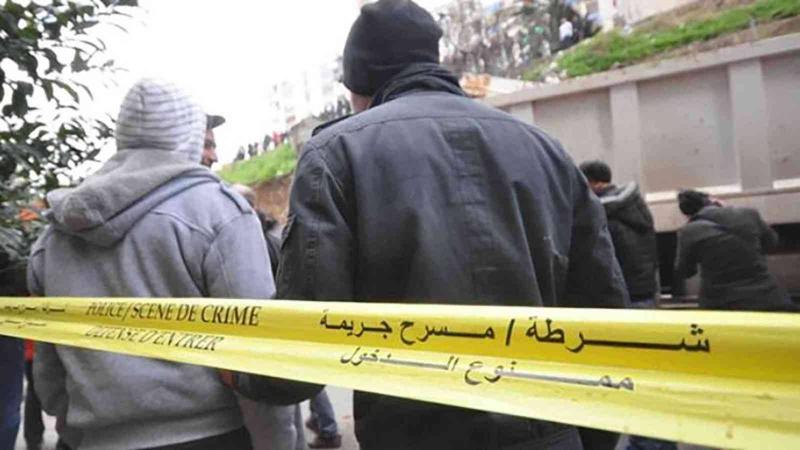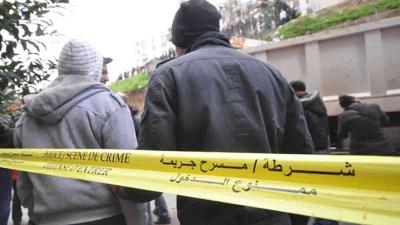It's madness. It's insanity. It's a great chaos. It's a jungle without birds. It involves murder with an axe, a hammer, a gunshot, or an explosion. It's murder through oppression, poisoning, and slaughter. It's a time where kidnapping and selling children, trafficking in organs, drug trafficking, and stealing from people with brazen eyes are justified. It's a time when Talaa, Rima, Basma, Manal, Rita Hardini, Joe Hatty, Lokman Slim, Sahar Fares, Ralf Malahi, Joe Bou Saab, Joe Noun, Charbel Hatty, Alexandra Najar, Elias Khoury... are coldly murdered. It's a time with no medicine, no drugs, no electricity, no water, no internet, no bread, and no energy. It's a time of crime in Lebanon and the disintegration of the state. And here are the criminals smiling. Sudden death from heart problems is increasing. Young men and women are losing lives still so fitting for them. Many apply the saying "they were hit and died" and no one cares about the reasons for their death. The repugnant events that we share via social media last 24 to 48 hours at best, only for us to share another disturbing news afterward. Thus, from news to news, we suffer while the bad ones survive. Is this our fate? Many have accepted it after growing tired... But do these surrendering individuals not at least have the right to question the signs that might warn in advance about the nature of the "criminal's project"? Can they anticipate, while listening to some "philosophies," that this or that person is lying and harbors evil? Could those who know Basma, Talaa, Manal, Rima, and the criminal Hussein Fayyad have predicted a crime? Is there any sign in the appearance and behavior of the Syrian killer Hassan Al-Ghanash that suggests he is a bloodthirsty killer?
Just as those who claim to uphold justice and the law were indifferent to the disappearance of the three sisters and their mother for 23 days until they were found dead, similarly, no one paid attention to the execution of Ali Al-Jafal on the airport road, behind the downtown restaurant. Similarly, no one noticed the attempted kidnapping of an expatriate in front of his house in Nabi Sheet, Beqaa, by two young men carrying firearms. Day after day, reports of wholesale thefts circulate while the fate of the perpetrators is ignored... So who do we turn to?
In criminal science, there are principles. Criminals follow previous "tactics" and possess specific traits; conversely, the goal of criminal science is to conduct a scientific study to prevent criminal behavior, understand its nature and causes, and how to control it. Pamela Huneineh Bou Ghassane, a criminal science specialist, always has her eye on the scene of any crime committed. So what about observing the scene of crime sprawling in Lebanon? She responds, "About a year ago, I said that crime rates would increase, and today I repeat that crime rates will rise even more. But don’t ask me about the percentage of this increase, as we have no studies, and the figures issued by the Internal Security Forces do not reflect the whole truth; many crimes go unreported."
Let's take the crime in Ansar. Did Pamela Huneineh Bou Ghassane follow its details? Does a criminal science specialist usually attend crime scenes committed in Lebanon? The house is the primary crime scene. What worries Pamela the most is the lack of enactment of a crime scene management law in Lebanon. Consequently, when a crime occurs, everyone enters the scene to observe what is happening up close; they come to "watch." This is globally prohibited to avoid contaminating the place before collecting all the evidence. She says, "I don’t know how the crime scene in Ansar was handled since I was not present, and the media did not convey that. However, what happened in the murder victims' home, with anyone able to enter and tamper with the place, is unacceptable. All areas regarded as crime scenes should be cordoned off. The house, which still contains the last traces of those who were in the house on the day the three girls and their mother disappeared, is the primary crime scene. The cave where they were found dead is another crime scene. There is also the killer's house, which should be sealed off for at least 48 hours to collect all the fingerprints present and take statements from all witnesses." Another point emphasized by the criminal science specialist is "the need to monitor all crime scenes since killers often return to them, especially after the areas have been cordoned off, a fact that many often overlook."
A question arises: why do killers fall into the trap of "returning to the crime scene despite knowing the saying 'the criminal always returns to the crime scene'?" She answers, "Because the majority of those who commit heinous crimes have a psychopathic personality (characterized by antisocial behavior, lack of empathy, a tendency towards violence, and selfishness). They return to indulge in what they have done. They want to remember the scene firsthand and feel its details. The need of these individuals, who often suffer from emotional deficits, to regain the feelings they experienced at the moment of the crime leads them back to the scene. This is the primary reason. The secondary reason is that they believe that being at the crime scene distances them from suspicion. They attempt to mislead justice by their presence at the crime scene, trying to approach security personnel and provide false information."
Killers think they are clever, but the reality is that "justice" can sometimes be ignorant.
Signs and behaviors
Let's return to the criminal science specialist to ask her about the personality of the killer who spills blood mercilessly? She replies, "From studies we have conducted, we have found that many crimes are committed for emotional reasons. During investigations, the obsession of many killers becomes apparent, whether it's with a body or perhaps a strand of hair or even a toe of the person upon whom they execute their particular sentence. She adds: "Criminal science employs profiling, which means using personal traits or behavioral patterns of the killer. Let's take the killer, Hassan Al-Ghanash, of Syrian nationality, who is said to be an accomplice in the Ansar crime. Visually, he possesses abnormal traits, including the noticeable eyeliner in his eyes, long hair, extreme thinness, and tattoos all over his body. These are all indicators of his disturbances. In general, criminal science states that certain traits in humans might indicate a likelihood of engaging in dangerous behaviors, including long ears, a broad jaw, and a wide forehead. However, this does not mean, of course, that everyone with such traits is a criminal nor that others are not. But this is what is mentioned in criminal studies."
Crimes are increasing and mushrooming. According to the International Information numbers, car thefts increased by more than 82% comparing data from January and February 2018 to the same months in 2022, thefts increased by 35.65%, and kidnappings for ransom increased from 4 cases to 16. Here, we recall what Pamela Huneineh Bou Ghassane said: not all crimes are reported.
In any case, there have been those who have repeated in the past few days, "Be careful with your children." The numbers of missing children are on the rise. We ask about the truth of the matter, and we return to "the girls who left and did not return." Their number is increasing significantly, but a source from Internal Security repeats: "They run away voluntarily, and three-quarters of them come back." Whatever the case, what we read represents a phenomenon.
Another horrendous matter is parents selling their children. On March 17, two Syrian parents were arrested for selling their daughter for a total of 12 million Lebanese lira in two payments, covering the cost of her birth in the hospital. Another horrific matter.
One of their heinous crimes
Here, a security official differentiates in the child-selling case between those who possess expertise in it and form networks, and those who do it to pay rent and provide food. Those who accept payment in Lebanese lira are compelled to act thus, while those receiving high amounts in dollars pose a greater danger. We return to the criminal science specialist to ask her about the punitive system supposed to be applied: Does the death penalty, demanded by the families in Ansar, serve as a deterrent to others? She responds, "This punishment may be adopted to reduce tensions, but no study has proven that this penalty has served as a social deterrent. Those who intend to commit a crime will do so. She continues: Some criminals themselves, like those who committed the Ansar crime, face execution with emotionless glances, unlike those who commit revenge crimes; these often feel regret."
Before we conclude, a horrific crime just occurred (yesterday afternoon) in Nabatieh. An infant was thrown from a height and was mauled by an animal. Is there anything worse than this?




